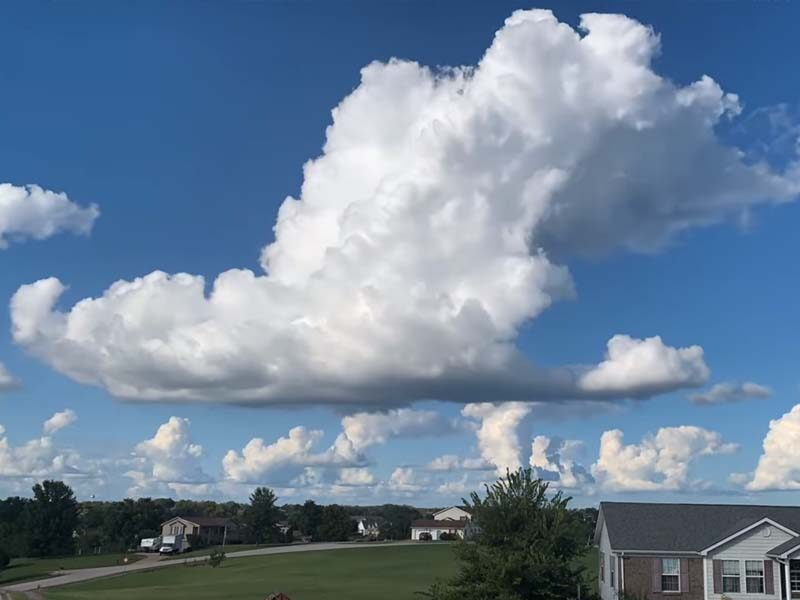As the winter chill sets in, it’s essential to create a comfortable and healthy environment in our homes. Achieving the right humidity level is a crucial aspect of maintaining indoor comfort during the winter months. But what is the best level for your home in winter?
In this article, we will explore the optimal range, the risks associated with high or low humidity, and practical solutions to maintain a healthy balance.
Understanding the Best Humidity Level for Winter Homes
To create a comfortable and healthy living space, experts recommend keeping indoor humidity levels between 30% and 50% during winter. This range offers numerous benefits, including:
- Respiratory comfort: Adequate humidity levels help prevent dryness of the respiratory tract, reducing the risk of respiratory infections and improving breathing comfort. Dry air can cause irritation and discomfort, particularly for individuals with asthma or allergies;
- Skin health: Dry winter air can cause skin dryness, itching, and irritation. Optimal levels help maintain skin moisture, promoting healthier skin during the colder months. This is especially important for individuals with sensitive or dry skin conditions;
- Protection for wooden furniture and structures: Maintaining appropriate levels prevents wood from drying out and cracking, preserving the integrity of furniture and wooden structures in your home. Dry air can cause wooden furniture to shrink and warp, leading to costly repairs or replacements.
Maintaining the recommended range in your home during winter provides numerous benefits, including improved respiratory comfort, healthier skin, and protection for wooden furniture and structures.
By ensuring proper levels of humid air, you can create a more comfortable living environment for you and your family.
Consequences of Improper Winter Humidity and Condensation
Condensation, a common occurrence in winter due to temperature differences, can lead to various issues such as mold growth, rotting wood, and damage to walls and ceilings. Understanding these consequences is crucial to emphasize the importance of managing humidity levels effectively. Some of the risks include:
- Mold growth: Excessive moisture from condensation can create an ideal environment for mold to thrive. Mold not only damages your home’s structure but also poses health risks. Individuals with respiratory conditions or allergies can experience exacerbated symptoms in the presence of mold;
- Rotting wood: Continuous exposure to excess moisture can cause wood to rot, compromising the structural integrity of your home. Rotting wood can be a breeding ground for insects and lead to costly repairs. Areas prone to condensation, such as windowsills or areas with poor ventilation, are particularly susceptible to wood damage;
- Damage to walls and ceilings: Condensation can lead to peeling paint, stains, and deterioration of drywall and ceiling materials. Excess moisture can seep into the walls and ceilings, causing them to weaken, discolor, or even collapse in severe cases. This can result in expensive repairs and compromised structural stability.
Thus, improper moisture levels and condensation can have serious consequences for your home’s integrity and indoor air quality. The risks include mold growth, rotting wood, and damage to walls and ceilings.

By managing the levels effectively and preventing condensation, you can safeguard your home’s structure and promote a healthier living environment. Regular monitoring and necessary interventions will help mitigate the risks associated with excess moisture.
Choosing the Right Humidifiers for Winter
Humidifiers play a vital role in combatting dry indoor air during winter. Understanding the different types of humidifiers available and their features will help you select the most suitable option for your home. Some common types include:
- Evaporative humidifiers: These use a fan to blow air over a wet wick or filter, causing water to evaporate and add moisture to the air;
- Ultrasonic humidifiers: These produce a fine mist using ultrasonic vibrations and are known for their quiet operation;
- Steam humidifiers: These create steam by heating water and releasing it into the air. They provide quick humidification but consume more energy.
Choosing the right humidifier depends on factors such as the size of the room, desired humidity output, and personal preferences. Consider factors like maintenance requirements and noise levels when making your selection.
Other Problems with High Humidity Levels
While low moisture is a common concern in winter, excessively high levels can also pose problems.
Some issues associated with high humidity include:
- Mold growth and musty odors: High humidity creates an ideal breeding ground for mold and mildew, leading to musty odors and potential health issues;
- Damage to building materials: Prolonged exposure to high humidity can cause warping, buckling, and deterioration of materials such as wood, wallpaper, and paint.
To maintain a healthy indoor environment, it’s crucial to strike a balance and prevent moisture levels from becoming too high.

Factors Affecting Humidity Levels in Winter
Several factors influence indoor humidity levels during winter. Understanding these factors and managing them effectively will help you maintain optimal moisture levels. Consider the following:
- Temperature: Colder temperatures generally result in lower levels. Heating systems can further dry out the air. Adjusting the thermostat and using supplemental humidification can help regulate moist air;
- Ventilation: Poor ventilation can trap moisture indoors, leading to high levels. Proper ventilation, including the use of exhaust fans and opening windows periodically, helps control humidity;
- Lifestyle habits: Activities like cooking, showering, and drying clothes indoors can introduce excess moisture into the air. Monitoring and managing these activities can help maintain balanced moisture levels.
Measuring and Balancing Humidity Levels
Determining your home’s humidity level is essential for proper management. Consider the following methods to maintain control:
- Hygrometers: These devices provide accurate measurements of moisture levels in your home. Place them in commonly used areas to monitor and adjust humidification as needed;
- Smart thermostats: Some advanced thermostats include built-in sensors that provide real-time readings and allow you to control the levels remotely.
To achieve a balanced level, follow these tips:
- Adjusting settings: Use your heating system’s humidification settings, if available, to regulate indoor humidity. Consult the manufacturer’s instructions or seek professional advice for optimal settings;
- Using humidifiers: Place humidifiers strategically in rooms where moisture is needed. Follow manufacturer guidelines for proper usage and maintenance;
- Implementing ventilation strategies: Open windows periodically to allow fresh air circulation. Utilize exhaust fans in kitchens and bathrooms to remove excess moisture.
Key Aspects of Winter Humidity Management
| Aspect | Description |
|---|---|
| Optimal Range | Recommended indoor humidity levels during winter: 30% – 50% |
| Consequences of Condensation | Mold growth, rotting wood, and damage to walls and ceilings |
| Types of Humidifiers | Evaporative, ultrasonic, and steam humidifiers |
| Issues | Mold growth, musty odors, and damage to building materials |
| Affecting Factors | Temperature, ventilation, and lifestyle habits |
| Measuring and Balancing | Hygrometers, smart thermostats, adjusting settings, using humidifiers, and implementing ventilation strategies |
Conclusion
Maintaining the ideal humidity level in your home during winter is crucial for a comfortable and healthy living environment. By understanding the recommended range, preventing condensation, choosing the right humidifiers, considering the impact of high moisture levels, and managing factors that influence moist air, you can ensure a cozy and problem-free winter season.
Regularly monitor and adjust the levels to achieve an optimal balance, promoting well-being and protecting your home’s integrity.


